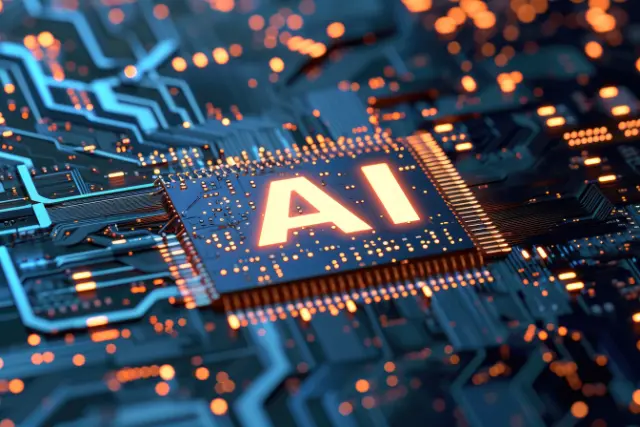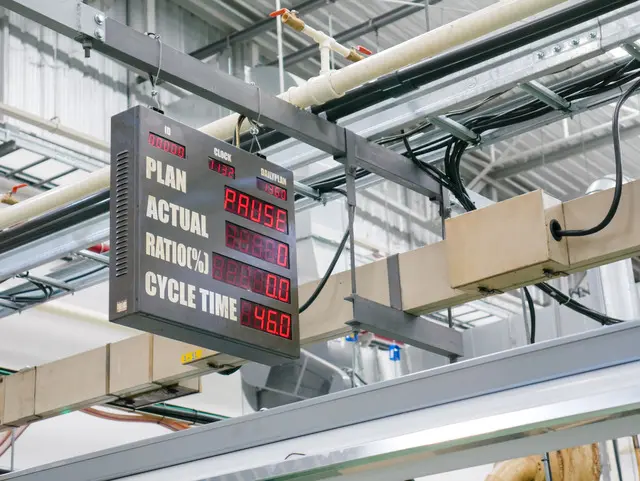Revolutionizing Workforce Management Automation in Manufacturing
In today’s competitive manufacturing landscape, optimizing workforce productivity is paramount. Workforce Management Automation (WMA) has emerged as a game-changer, addressing the challenges of employee scheduling, time tracking, and performance management. By leveraging Python, AI, and cloud-based solutions, manufacturers can streamline these processes, enhancing efficiency and accuracy.
WMA empowers manufacturers to automate complex scheduling tasks, ensuring optimal resource allocation and minimizing labor costs. Advanced scheduling algorithms consider factors such as employee skills, availability, and workload to create optimized schedules that meet production demands while minimizing overtime and idle time. This Workforce Management Automation not only improves productivity but also reduces labor costs, boosting profitability.

Python, AI, and the Cloud: Empowering Workforce Management Automation
Python, AI, and cloud platforms play pivotal roles in Workforce Management Automation (WMA), transforming the way manufacturers manage their workforce.
Python: The Foundation for Unattended and Attended Bots
Python excels in developing both unattended and attended bots for WMA. Unattended bots can automate repetitive, rule-based tasks such as scheduling, time tracking, and data entry, freeing up human resources for more strategic initiatives. Attended bots, on the other hand, collaborate with employees to enhance their productivity. For instance, they can provide real-time assistance with scheduling, task management, and performance tracking, empowering employees to make better decisions and optimize their workflow.
Cloud Platforms: Orchestrating Automation at Scale
Cloud platforms offer a comprehensive suite of features and capabilities that surpass traditional RPA/workflow tools orchestrators. They provide:
- Scalability: Cloud platforms can seamlessly handle large volumes of data and complex automation processes, making them ideal for enterprise-scale WMA implementations.
- Reliability: Cloud platforms offer high availability and fault tolerance, ensuring that automation processes run smoothly and uninterrupted.
- Integration: Cloud platforms seamlessly integrate with other business systems, such as ERP and HRMS, enabling end-to-end automation of workforce management processes.
AI: Enhancing Accuracy and Handling Complexities
AI techniques such as image recognition, natural language processing (NLP), and generative AI (Gen AI) can significantly enhance the accuracy and efficiency of WMA automations.
- Image recognition can automate tasks such as extracting data from employee timesheets and work orders, reducing errors and saving time.
- NLP can analyze text-based data, such as employee feedback and performance reviews, to identify trends and patterns, providing valuable insights for workforce planning and development.
- Gen AI can generate realistic schedules and plans that optimize employee utilization and minimize labor costs, considering various constraints and preferences.
By harnessing the power of Python, AI, and cloud platforms, manufacturers can unlock the full potential of Workforce Management Automation, driving productivity, efficiency, and cost savings while empowering their workforce.

Building the Workforce Management Automation with Python and the Cloud
Developing a robust Workforce Management Automation (WMA) solution using Python and cloud platforms involves several key steps:
- Process Analysis: Analyze the existing workforce management processes to identify areas suitable for automation, such as scheduling, time tracking, and performance management.
- Data Integration: Establish secure data connections between the WMA system and relevant data sources, such as ERP, HRMS, and employee time clocks.
- Bot Development: Use Python to develop unattended and attended bots that automate specific tasks within the WMA process, such as schedule creation, time tracking data entry, and performance analysis.
- Cloud Deployment: Deploy the WMA solution to a cloud platform to ensure scalability, reliability, and accessibility.
- AI Integration: Leverage AI techniques to enhance the accuracy and efficiency of the WMA system, such as using image recognition for timesheet data extraction and NLP for employee feedback analysis.
Data Security and Compliance in Manufacturing
Data security and compliance are paramount in the manufacturing industry. By building the WMA solution with Python and deploying it on a reputable cloud platform, manufacturers can ensure:
- Data encryption: Sensitive employee data is encrypted at rest and in transit, protecting it from unauthorized access.
- Compliance with regulations: The cloud platform and Python libraries used adhere to industry standards and regulations, such as ISO 27001 and GDPR, ensuring compliance with data protection laws.
- Auditability: Detailed logs and audit trails provide a comprehensive record of all automation activities, enhancing transparency and accountability.
Advantages of Python over No-Code RPA/Workflow Tools
While no-code RPA/workflow tools offer a low-code/no-code approach to automation, they often lack the flexibility and scalability required for complex Workforce Management Automation implementations. Python, on the other hand, provides:
- Greater customization: Python allows for the development of tailored automations that meet the specific needs of the manufacturing organization.
- Integration with diverse systems: Python can seamlessly integrate with a wide range of legacy systems and data sources, ensuring comprehensive automation coverage.
- Scalability: Python-based automations can be easily scaled to handle large volumes of data and complex processes, making them suitable for enterprise-scale deployments.
Algorythum’s approach to Workforce Management Automation with Python and cloud platforms addresses the limitations of off-the-shelf automation solutions, providing manufacturers with a robust, scalable, and secure solution that drives productivity, efficiency, and cost savings.

The Future of Workforce Management Automation
The future of Workforce Management Automation (WMA) is brimming with potential for further innovation and enhancement. Here are some exciting possibilities to consider:
- Integration with IoT devices: WMA systems can leverage IoT sensors and devices to collect real-time data on employee productivity, machine utilization, and environmental conditions, enabling more accurate scheduling and resource allocation.
- Predictive analytics: By analyzing historical data and leveraging machine learning algorithms, WMA systems can predict future workforce demand and optimize scheduling accordingly, minimizing overstaffing and understaffing.
- Virtual and augmented reality: VR and AR technologies can enhance employee training and onboarding, providing immersive and interactive experiences that improve skill development and knowledge retention.
Subscribe and Get in Touch
To stay updated on the latest trends and innovations in automation for the manufacturing industry, subscribe to our newsletter.
Contact our team today to schedule a free feasibility assessment and cost estimate for your custom Workforce Management Automation requirements. Let us help you unlock the full potential of your workforce and drive operational excellence.

Algorythum – Your Partner in Automations and Beyond
At Algorythum, we specialize in crafting custom RPA solutions with Python, specifically tailored to your industry. We break free from the limitations of off-the-shelf tools, offering:
- A team of Automation & DevSecOps Experts: Deeply experienced in building scalable and efficient automation solutions for various businesses in all industries.
- Reduced Automation Maintenance Costs: Our code is clear, maintainable, and minimizes future upkeep expenses (up to 90% reduction compared to platforms).
- Future-Proof Solutions: You own the code, ensuring flexibility and adaptability as your processes and regulations evolve.









